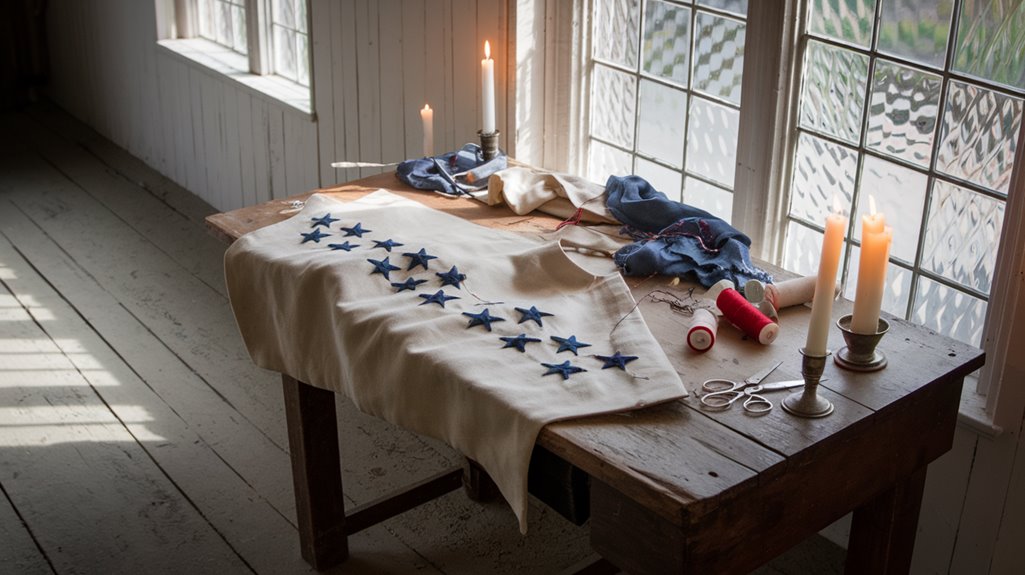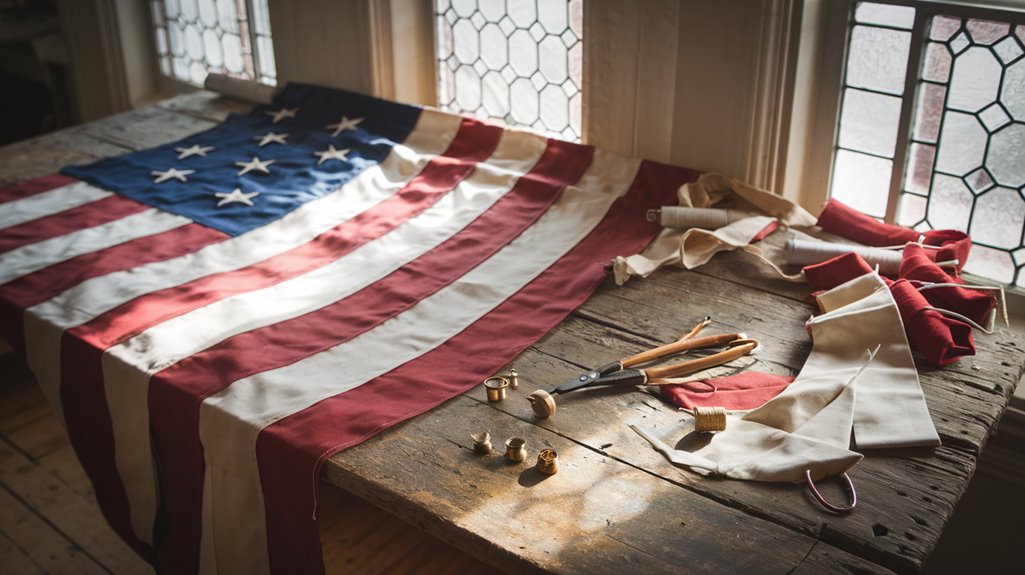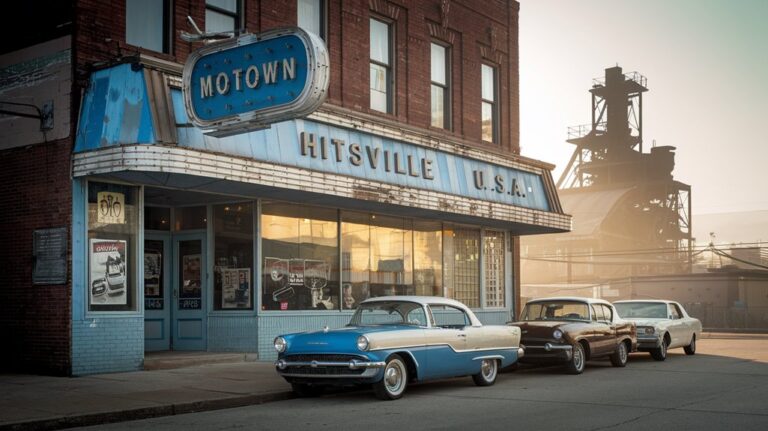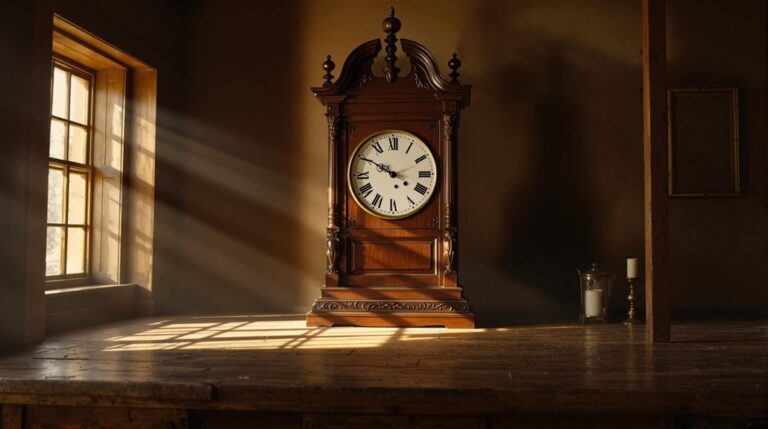Betsy Ross Likely Didn’t Create the First American Flag
You've probably heard the tale of Betsy Ross stitching the first American flag at George Washington's request, but this cherished story isn't quite what it seems. While Ross certainly worked as an upholsterer in Philadelphia during the Revolutionary period, the evidence connecting her to the original Stars and Stripes remains surprisingly thin. What you'll discover about the true origins of America's most iconic symbol might challenge everything you thought you knew about this foundational piece of national lore.
The Birth of the Betsy Ross Legend
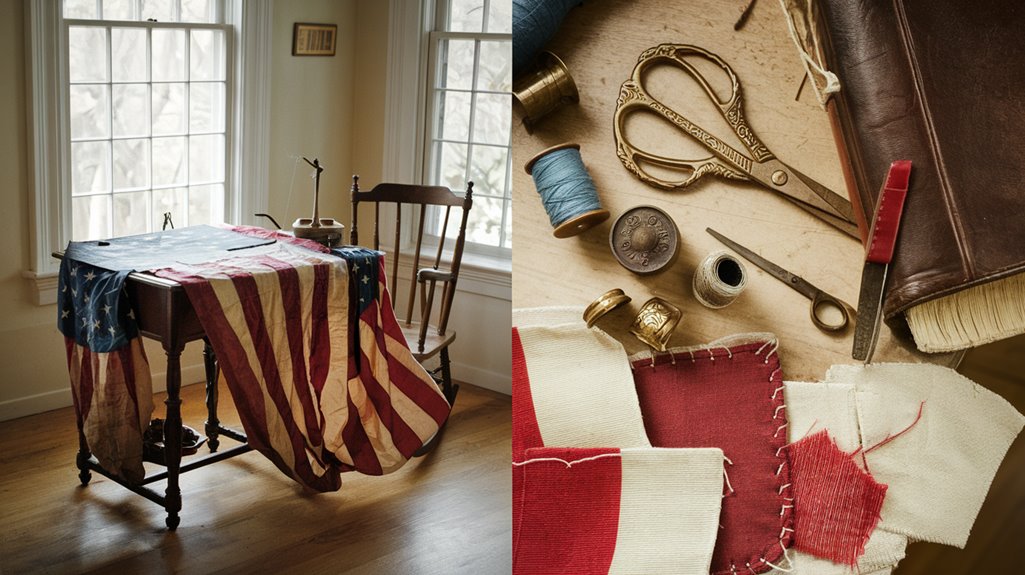
While there's no contemporary evidence from the 1700s to support it, the legend of Betsy Ross creating the first American flag began with her grandson William J. Canby in 1870.
During a speech to the Historical Society of Pennsylvania, he shared the tale that would soon become deeply woven into American folklore.
To bolster his claims, Canby gathered signed affidavits from family members who said Betsy herself had told them about making the first flag.
The timing couldn't have been better for the story to take hold. As America struggled to heal after the Civil War, people were hungry for unifying national symbols.
Although the story included a detailed account of George Washington's visit with a flag design, no concrete evidence has ever been found to verify this meeting took place.
Historical records show that other flag makers like Margaret Manny were active in Philadelphia during this period, creating flags for the revolution.
The tale of a humble seamstress creating one of America's most important emblems captured the public's imagination, and you'll find it's remained a powerful part of American culture ever since.
Historical Evidence Against the Myth
The romantic tale of Betsy Ross creating the first American flag faces significant historical challenges. When you evaluate the evidence within its historical context, you'll find no contemporary records supporting her role. The story didn't emerge until 1870, nearly a century after the supposed event.
Consider these striking gaps in the historical record:
- Empty congressional ledgers where payment records should exist
- Missing diary entries from founding fathers discussing the flag
- Absent letters between officials mentioning Ross's involvement
- Non-existent documentation of the committee's visit to Ross
- Lost original flag that would prove her craftsmanship
The evidence evaluation suggests Francis Hopkinson, a New Jersey delegate, might've designed the flag instead. He even submitted a bill to Congress for his design work, though they refused payment, stating others were also consulted. Despite extensive historical searches through documents of the Continental Congress, no evidence has emerged to support the legend. The Pennsylvania State Navy did pay Ross for making American flags in 1777, but this only proves her role as a flag maker, not as the creator of the first flag.
The True Origins of America's First Flag
Despite popular folklore surrounding America's first flag, its true origins trace back to a simple congressional resolution on June 14, 1777. The resolution established that the flag would feature thirteen alternating red and white stripes and thirteen white stars on a blue field, representing the original colonies.
In historical context, you'll find that the flag's symbolism drew from various sources, including classical heraldry and earlier naval ensigns. The design was officially credited to Congressman Francis Hopkinson. The colors chosen held specific meanings, with white signifying purity and innocence.
The flag first flew in battle at Fort Schuyler, though it wasn't initially intended as a national symbol but rather as a naval ensign.
You'll notice that the design concept of using stars to represent territorial divisions wasn't entirely new, as similar patterns appeared in the 1618 Valais coat of arms.
The flag's evolution would continue as new states joined the Union.
Early American Flag Designs and Evolution
American flag designs underwent significant changes between 1775 and 1960, starting with the Continental Navy ensign that featured British elements.
Early design variations flourished due to the lack of standardization, with flags displaying different star arrangements and even blue stripes. The circular arrangement of stars emphasized that no colony stood above another in status.
You'll find that flag symbolism evolved dramatically, from the 15-star Star-Spangled Banner that inspired our national anthem to the 48-star design that lasted nearly 50 years. The Sons of Liberty Flag influenced early American flag designs.
- Picture a hand-sewn flag with stars arranged in a perfect circle against a blue canton
- Imagine 15 bold stripes waving above Fort McHenry during the War of 1812
- Visualize battle-worn flags with 34 stars leading Union troops during the Civil War
- See the striking 48-star pattern standardized by President Taft in 1912
- Envision today's 50-star flag first raised on July 4, 1960
The Role of Francis Hopkinson
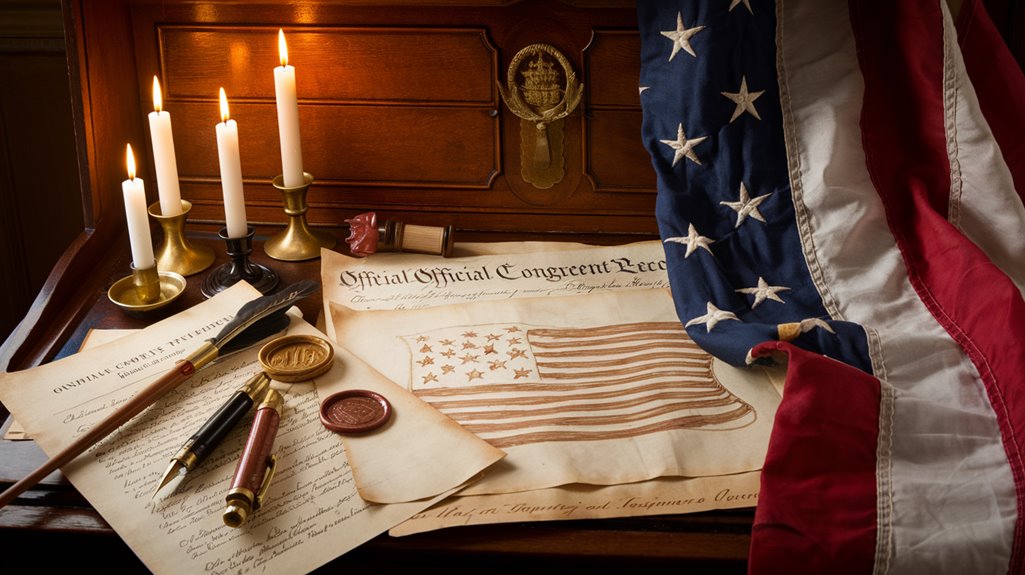
Francis Hopkinson, a talented Philadelphia lawyer and musician, played a pivotal role in designing our nation's flag while serving on the Continental Navy Board in 1776.
Beyond the flag, he also created the Great Seal of the United States.
His contributions to the flag design process are well-documented through official records, including his 1780 letter to the Board of Admiralty requesting payment for his work.
While you might think Hopkinson received recognition for his design, he actually faced significant challenges getting compensated. He asked for a modest payment of a quarter cask of wine, but the Board of Treasury denied his request, claiming he wasn't the sole designer.
Despite Congress's resolution to address his claim, the cash-strapped government never paid him. Unlike the popular Betsy Ross story, which emerged nearly a century later, Hopkinson's involvement is supported by contemporary historical evidence. His commitment to public service continued until he died while serving as a federal judge in 1791.
Modern Interpretations and Cultural Impact
While Francis Hopkinson's documented contributions to the flag's design remain clear, the Betsy Ross flag has taken on complex cultural meanings in modern times.
According to historical records, most historians doubt any direct involvement by Ross in creating the first flag. The flag's symbolism evolution reflects America's ongoing dialogue about cultural identity, sparking both celebration and controversy. You'll find it displayed at presidential inaugurations as a symbol of patriotism, yet it's also become entangled in debates about racial equity and historical representation. The NAACP has reported that certain extremist groups have misappropriated the flag's imagery.
Nike's 2019 shoe controversy highlighted these competing interpretations.
- Stars arranged in a perfect circle, representing colonial unity
- Thirteen stripes alternating between red and white
- Clean, crisp design that's instantly recognizable
- Simple color palette of red, white, and blue
- Original 13 stars glowing against a deep blue canton
Despite historical uncertainties about its creator, the flag continues to evoke powerful emotions about America's founding principles.

